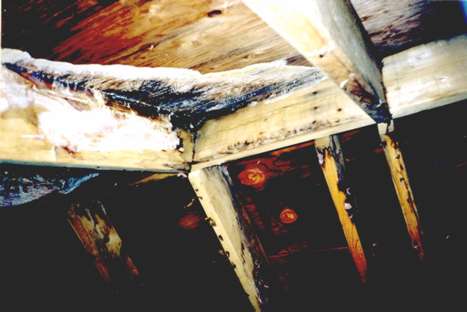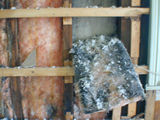 |
 |
 |
|
|
|
|
|
|
|
|
|
Solutions
Toxic Mold
|
Toxic mold has recently come to the forefront as a major concern among architects, developers, contractors and homeowners. In the past decade, over 9,000 lawsuits related to mold have been filed in the US and Canada. In addition to the rise in mold-related damage liability and litigation issues, the building industry has also taken note of the health risks associated with toxic mold. As a result of the growing public health and remediation costs, the building and science communities have joined forces to promote environmentally friendly, mold-preventing building products like foam insulation.
What is Toxic Mold?
According to microbiologists, there are more than 100, 000 known species of mold and while most are harmless to humans, over three dozen species can be source of severe health problems. Mold growth is caused by moisture-filled air moving into the walls and roof cavities. Inadequate or poor air barrier system installation, a missing or incomplete vapor retarder and high levels of relative humidity also promote mold growth.
Adverse Heath Effects
Airborne mold spores can cause a series of long and short-term health problems which include respiratory problems, skin or eye irritations, headaches and chronic fatigues. Toxic molds are also being researched as possibly having a link to some severe illnesses such as cancer, and cognitive and neurological impairments.
Structural Damage
The most common structural damages of mold formation include rotting of wood and wooden structural framing. It can also cause damage to the existing insulation materials such as fiberglass batt and blown cellulose.
Prevention & Remediation
According to the EPA, once mold has formed and depending on its spread and the damage caused, remediation can be a costly and lengthy process. According to estimates, cost of single abatement can be as much as $40,000. Although the EPA doesn't list any clear guidelines toward mold prevention, mold CAN be prevented. Since mold formation is directly related to moisture and air infiltration, an adequate air barrier and vapor retarder can prevent mold growth. Polyurethane closed-cell foam performs both highly effective air barrier and vapor retarder when used for insulation.
Related Theory and Research
Case Studies
FOAM-TECH Solutions
-
Perform initial building diagnostics and testing to identify causes of the problem. Testing may include infrared thermography, blower door testing, or temperature and humidity monitoring.
-
Look for and eliminate sources of moisture from places like basements and crawl spaces.
-
Seal any air leaks resulting from infiltration or exfiltration from the building. Creating a tight building envelope is the first step toward controlling the indoor environment.
-
If necessary, recommend the installation of mechanical ventilation systems to control the movement of air/moisture in and out of the building.
-
Insulate the structure using closed-cell foam which acts as both a vapor retarder and an air barrier.



